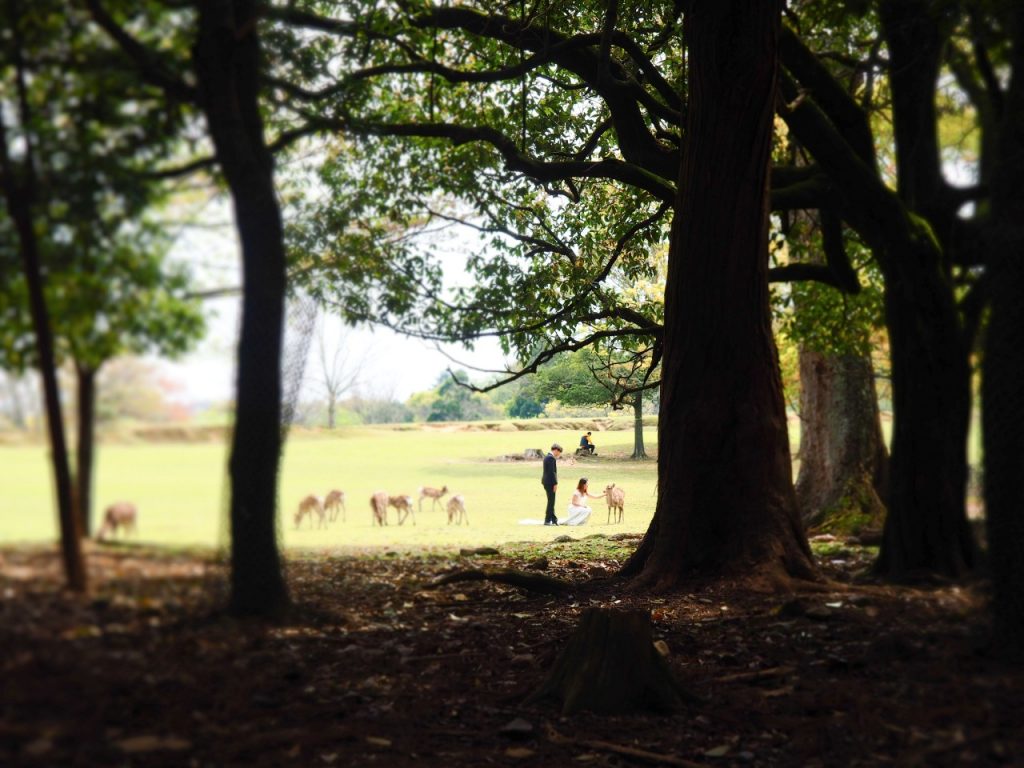Nara Park, a sprawling oasis of tranquility and natural wonder, beckons travelers with its extensive grounds and enchanting flora and fauna. But as you contemplate a visit to this mesmerizing locale, a question may arise: do you need tickets for Nara Park? The answer might surprise you. This article delves into the essence of Nara Park, illuminating the intricacies of ticketing, accessibility, and the myriad experiences that await.
First, let’s traverse the fundamental inquiry: Nara Park does not require an entrance fee. Indeed, this magnificent expanse of over 1,200 acres, nestled in the heart of Nara, Japan, is free to explore. Here lies a unique opportunity to immerse yourself in nature, interact with friendly, roaming deer, and marvel at the historical treasures that this ancient city harbors—all without the burden of an admission fee.
However, before you lace up your walking shoes and set off on this adventure, it’s prudent to understand what nuances accompany your visit. While entry to the park itself is complimentary, certain attractions within its boundaries do necessitate a ticket. For instance, famous landmarks such as Todai-ji Temple and Kasuga-taisha Shrine require an admission fee, as they enshrine Japan’s rich cultural heritage. Examining these gems is an absolute must, but preparation is key.
The charm of Nara Park lies not solely in its deer and temples, but also in its ability to transport visitors to a serene world ensconced in tradition. The captivating sight of Sika deer roaming freely is iconic and has become a symbol of the park. These gentle creatures hold a revered status among locals, believed to be messengers of the gods. As you explore the park, be sure to engage with them; they are quite accustomed to human interaction, and feeding them with specially purchased deer crackers is an experience that will undoubtedly charm both young and old alike.
While the allure of the deer is undeniable, your exploration won’t be complete without acknowledging the historical landmarks that dot the landscape. The Todai-ji Temple is a highlight, recognized by its vast Great Buddha statue, a stunning epitome of Japanese artistry and craftsmanship. The grandeur of this temple, in conjunction with its significance in Japanese history, makes it a focal point of any visit. Be prepared to part with a small fee for entry, but know that this investment promises a glimpse into the profound spirituality embedded in this ancient structure.
Not far from the temple, the Kasuga-taisha Shrine stands as a testament to Shinto architecture. Its path, framed by seemingly endless stone lanterns, creates an enchanting atmosphere that transports you back in time. Again, while the shrine’s courtyard is accessible at no cost, certain inner sanctums impose small fees that enable preservation and worship. Consider these contributions not merely as tickets but as tickets to understanding and respecting the cultural fabric of Japan.
Timing your visit to Nara Park is another critical factor that can enhance your experience. Springtime, when cherry blossoms paint the landscape in shades of pink and white, offers breathtaking scenery. Conversely, autumn presents a kaleidoscope of colors as the leaves turn fiery shades of red and orange. Each season unveils its unique charm, allowing visitors to witness the park’s transformation throughout the year. Notably, early morning strolls can provide a more serene atmosphere, where you may find the deer more active and the temples quieter for contemplation.
Accessibility is another essential consideration for your visit. Located strategically within the city of Nara, the park is easily reachable by public transport. Buses and trains regularly operate routes from Kyoto and Osaka, reducing any sense of travel stress. For those who prefer a more leisurely approach, walking along the paths leading to the park can also be a rewarding experience. Embrace the journey, as the sights and sounds of the journey to the park offer glimpses into local life.
For families with young children, Nara Park offers ample opportunities for fun and education. Numerous picnic spots allow families to gather and enjoy lunch surrounded by nature. Meanwhile, the Nara National Museum, located nearby, offers intriguing exhibitions that explore the artistic and historical significance of the region. Fortunately, this museum does charge a small admission fee, providing an opportunity for enriching your understanding of Nara’s history without breaking the bank.
As your day draws to a close, consider culminating your visit with a leisurely stroll through the picturesque surroundings. As the sun begins to dip below the horizon, casting a golden glow over the landscape, you may find peace and reflection among the serene ambiance of Nara Park. Take a moment to appreciate the unique experiences that this haven offers. The absence of a ticket for the park itself should prompt gratitude, further encouraging you to connect with this beautiful piece of Japan.
In conclusion, while Nara Park does not impose an entry fee, nestled within it are historical treasures worth your time and investment. The breathtaking landscapes, cultural heritage, and gentle deer combine to create a tapestry of experiences that beckon for exploration. As you prepare for your journey, keep this guide in mind, ensuring that you’re well-equipped to fully embrace the beauty of Nara Park. A visit here may very well shift your perspective, inspiring a connection to nature and Japan’s rich history that you’ll carry long after you leave.
